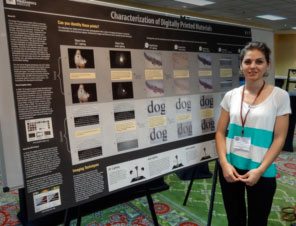Standards and Testing for Traditional and Modern Image Media
Transcription of the Archiving 2012 Session Keynote given by IPI Director James Reilly
 While many if not almost all of the talks to be given in Archiving 2012 concern the acquisition and management of information in digital form, our keynote today deals with two topics firmly rooted in the preservation of human-readable, physical print media. In both topics we will contrast the situation two decades ago when silver halide imaging was the unquestioned leading technology for making reflection prints, with the current situation where silver halide is still widely used but three newer technologies—inkjet, electrophotography, and thermal dye transfer—are the primary methods in use for creating photographic prints. While many if not almost all of the talks to be given in Archiving 2012 concern the acquisition and management of information in digital form, our keynote today deals with two topics firmly rooted in the preservation of human-readable, physical print media. In both topics we will contrast the situation two decades ago when silver halide imaging was the unquestioned leading technology for making reflection prints, with the current situation where silver halide is still widely used but three newer technologies—inkjet, electrophotography, and thermal dye transfer—are the primary methods in use for creating photographic prints.
One topic we will examine is testing, that is to say accelerated aging methods for predicting life expectancy when prints are exposed to stresses from heat, humidity, light, water immersion, abrasion, and air pollutants. Testing is something that we have done a lot of at the Image Permanence Institute over its 27 year history. For those of you who are not familiar with IPI (as we call it), we are a university-based, non-profit laboratory whose mission is research and education in the preservation of imaging materials and cultural heritage materials in general. We have a staff of 16 persons and are a department of the College of Imaging Arts and Sciences at Rochester Institute of Technology in Rochester, New York. We are co-sponsored by IS&T and we are very proud of that long association. We’re the only unit of RIT that actually has two logos on our letterhead and business cards. From the beginning in 1985 we have offered testing services as well as done grant-supported independent research on imaging materials. I will talk about how test methods have changed from the silver halide era to the digital print era.
Read More

IPI Visits the 70th Annual Meeting of the American Society of Questioned Document Examiners
In August, IPI presented a poster at the Annual Meeting of the American Society of Questioned Document Examiners detailing the various imaging techniques IPI uses to characterize the physical attributes of digital prints. IPI is not expanding its scope into forensics, rather we saw the potential synergy between these two fields that are both attempting to develop print identification techniques for modern hardcopy output.

IPI researcher Nino Gordeladze presenting the poster at ASQDE meeting
Over the last five years, IPI has been developing an imaging strategy and a set of quantitative measurements that can be used to characterize and identify modern digital print materials (both images and documents). The imaging methods include varying the angle of lighting as well as the level of magnification. Structures such as surface gloss and texture as well as dot morphology and pattern can be assessed and compared to known print types. Furthermore, unique traits such as colorant bronzing, differential gloss, anti-block layers, etc. can also be used to narrow down the identification of particular print examples.
In addition to sharing our work, the document examiners at the conference were able to provide IPI with some potential new approaches for differentiating dye and pigment inkjet printed documents and images by using higher magnifications to observe dot shapes or the way colorants diffuse across paper fibers. Determining the accuracy and utility of these new methods for digital print identification in cultural heritage institutions is currently underway at IPI.
|